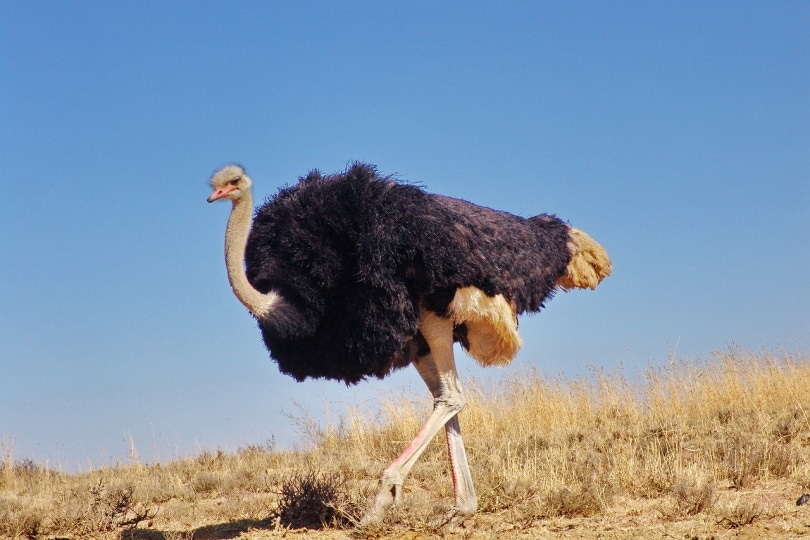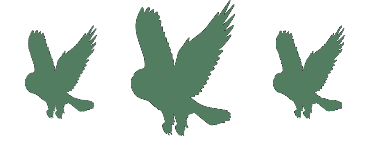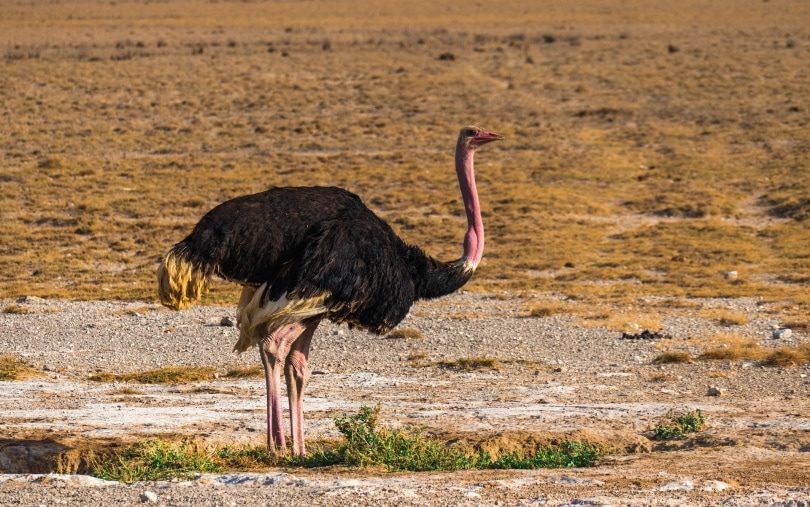Masai Ostrich: Facts, Origin & History (with Pictures)
Last Updated on

The Masai ostrich is a subspecies of the common ostrich known for its pink skin, and it’s one of the largest ostriches found in the African continent. The relationship between humans and ostriches oscillated with the rise and fall of the demand for ostrich products.
Today, farming ostriches has once again become a widespread practice. Although farming Masai ostriches isn’t as common, it does have the potential to grow into a popular business in Kenya and surrounding countries.
Here’s everything you need to know about the Masai ostrich and the relationship it has to humans.

The Earliest Records of Masai Ostrich in History
Ostriches have been around for millions of years. In fact, ostrich fossils date the existence of these birds in the Early Miocene Epoch, which is between 23 million to 16 million years ago.
The common ostrich originally lived all across the Sahara Desert, the Middle East, and Asia Minor. Over time, it developed into several distinct subspecies, including the Masai ostrich.
The Masai ostrich, or the East African ostrich, is a subspecies that originated from Africa. This particular subspecies lives in Kenya, Tanzania, and Uganda. They prefer living in savannas, but some populations can be found in deserts and rocky mountainous areas.

How Masai Ostriches Gained Popularity
Although there are wild ostrich populations all throughout Africa, ostriches have been farmed for centuries. In 1860, the first commercial ostrich farm appeared in South Africa. This farm exclusively harvested feathers.
Eventually, more farms appeared, and ostriches were also exported to other countries, including Argentina, Australia, New Zealand, and the US. Up until this point, ostriches were only farmed for their feathers.
Therefore, ostrich farming dropped significantly with World War I and World War II as the demand for feathers became nearly obsolete. However, a resurgence appeared after ostriches started getting harvested for their meat and hides.
Today, most ostrich farms are in South Africa. However, there’s one Masai ostrich farm in Kenya, which is simply known as Massai Ostrich Farm. This farm produces Masai ostrich meat, eggs, and hides. It also renders the fat to develop Masai ostrich oil.
Conservation Efforts of the Masai Ostrich
Although the Masai ostrich’s status is “Least Concern” by the International Union for Conservation of Nature (IUCN), wild ostrich populations have been in decline over the years.
One reason for the decline is due to increased human interaction. Humans hunt wild ostriches for their meat, feathers, and hide. Also, as the human population grows, the borders between human and ostrich territories clash, and many ostrich habitats get destroyed. This also leads to competition with other territorial animals.
Although they’re not endangered, these birds play an important role in the ecosystem. Ostriches forage for plants and berries, which helps new vegetation to grow. They also keep locusts and other insect populations under control.
Several conservation efforts have been established to protect and advocate for ostriches, including the African Wildlife Foundation. It’s important for ostrich conservation efforts to stand strong so that these birds can continue to thrive and play a crucial role in African ecosystems.


Top 10 Unique Facts About Masai Ostriches
- Masai ostriches only have two toes on each foot, and their feet are covered in scales.
- An adult Masai ostrich’s brain is only the size of a chicken egg.
- While their brain is small, Masai ostriches have large eyes that take up ⅔ of their face. They have excellent eyesight and can even focus on objects right underneath their beaks.
- Masai ostriches’ feathers have evolved so that they can survive in both hot and cold climates.
- During mating season, the pink hue of the male Masai ostrich’s neck and legs becomes more vibrant to increase its attractiveness to female ostriches.
- Female Masai ostriches in a flock share a communal nest. If there are too many eggs in a nest, the dominant female can identify other females’ eggs and will kick them out to protect her own.
- Masai ostrich eggs are about the size of a grapefruit, and they’re favorite foods for predators, including lions, jackals, and hyenas.
- Newborn Masai ostrich hatchlings are about the same size as a domestic chicken.
- Domesticating Masai ostriches became more popular in the 1990s because of their large size and quality of meat and leather.
- Masai ostriches don’t have any teeth, so they consume small pebbles, also known as gizzard stones, to help grind their food in the stomach.

Does The Masai Ostrich Make a Good Pet?
Simply put, Masai ostriches don’t make good pets. They can only be partly domesticated, and they tend to be very temperamental and unpredictable. On top of that, an agitated Masai Ostrich is dangerous.
Ostrich bites are very painful and can sometimes cause infections if they break the skin. More than that, Masai ostriches have very powerful legs and sharp claws. One kick from this bird can be fatal to humans. Also, they can run at speeds of 35-43 miles per hour, so you won’t be able to outrun an aggressive ostrich on foot.
If you do end up with an ostrich as a pet, they’ll need adequate fencing that’s sturdy and at least 6 feet tall to keep them inside. You’ll also need 64 square feet of space per ostrich. Masai ostriches are mostly herbivores and eat vegetation, seeds, and berries. They’ll also eat some insects.

Conclusion
Masai ostriches may be common, but they play a crucial role in the African ecosystem. Therefore, it’s important to keep conservation efforts in mind as the wild population is in decline. Also, encouraging the practice of ethical farming will help maintain a respectful and appreciative relationship between humans and Masai ostriches.
These birds may be one of the largest birds in the world and may have lived through prehistoric times. However, they now need the help of humans to continue to thrive and live on for many more years to come.
Featured Image Credit: polyfish, Pixabay
About the Author Robert Sparks
Robert’s obsession with all things optical started early in life, when his optician father would bring home prototypes for Robert to play with. Nowadays, Robert is dedicated to helping others find the right optics for their needs. His hobbies include astronomy, astrophysics, and model building. Originally from Newark, NJ, he resides in Santa Fe, New Mexico, where the nighttime skies are filled with glittering stars.
Related Articles:
When Were Binoculars Invented? History, Today & Future
Monocular vs Telescope: Differences Explained (With Pictures)
10 Types of Hummingbirds in Arkansas (With Pictures)
8 Types of Hummingbirds in Nebraska (With Pictures)
5 Types of Hummingbirds in Idaho (With Pictures)
3 Types of Hummingbirds in Mississippi (With Pictures)
8 Types of Hummingbirds in Kansas (With Pictures)
5 Types of Hummingbirds in West Virginia (With Pictures)
